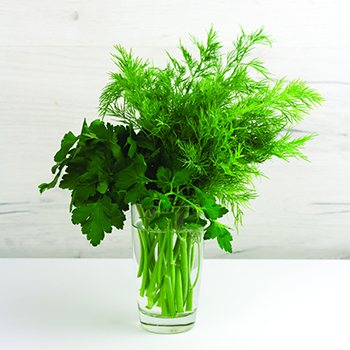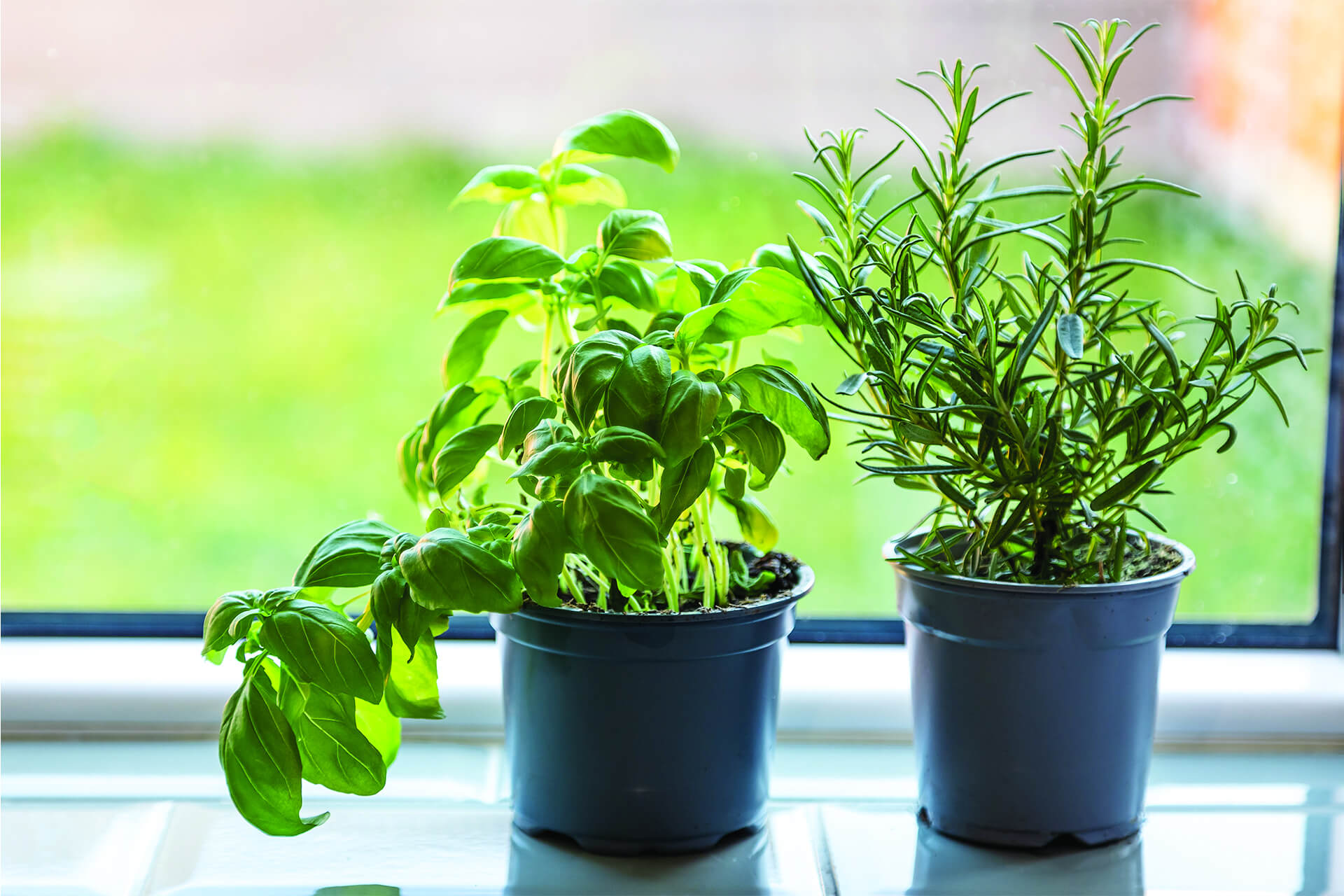
Paso 1
La albahaca, el eneldo, el perejil, el cilantro, la menta y otras hierbas delicadas deben tratarse como flores. Corta las bases de los tallos y coloca las hierbas en un vaso con una pulgada o dos de agua. Mantén la albahaca a temperatura ambiente, pero cubre las otras hierbas delicadas sin aplastarlas con una bolsa de plástico y almacénalas en el refrigerador. Cambia el agua cuando esté turbia.


